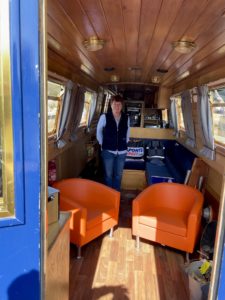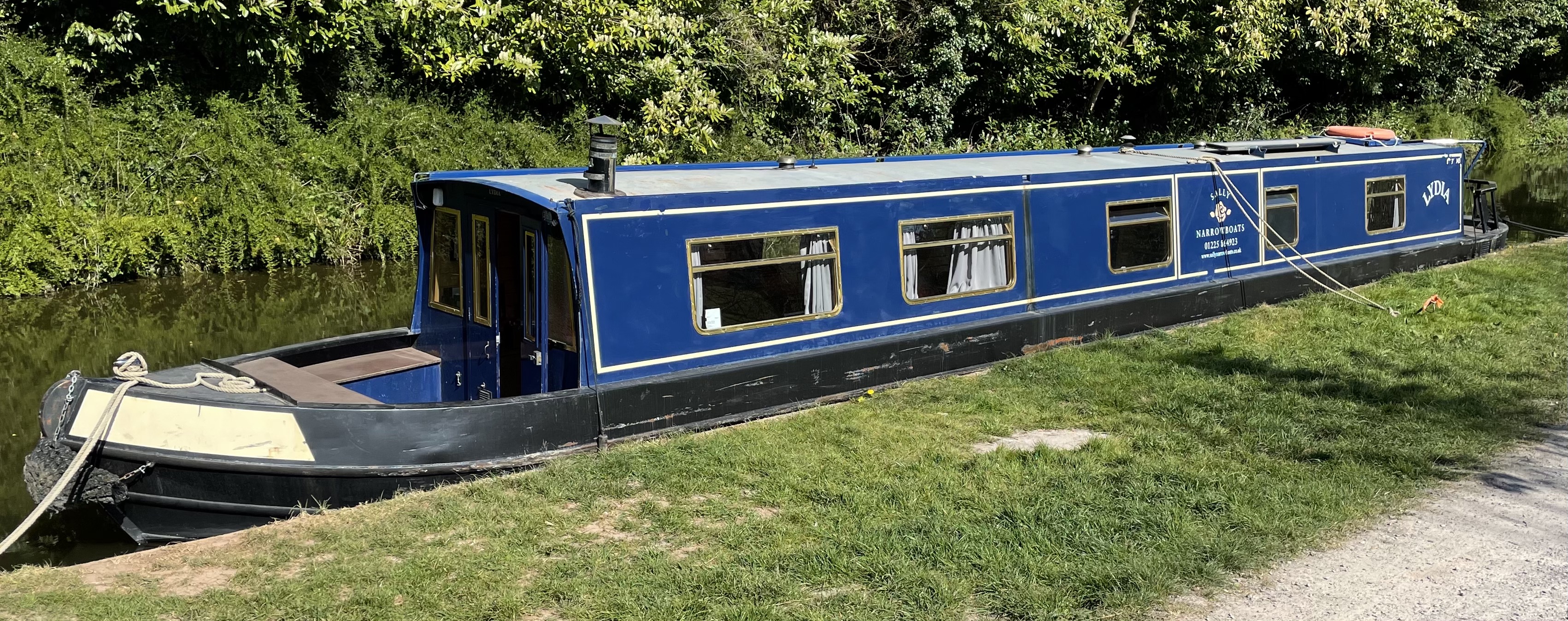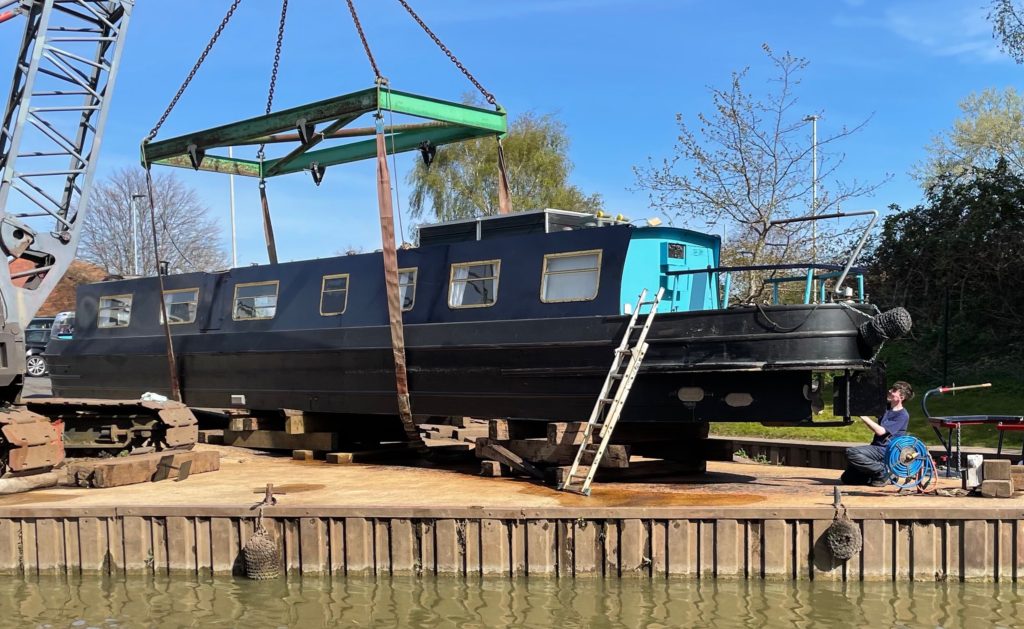Or, “Why are those boats such a funny shape, Mummy?”
The MV Lydia (or, more accurately, the NB Lydia) is our hire boat from Sally Narrowboats in Bradford on Avon. It – narrowboats do not seem to be “she”s – is around 6’9” wide and 56′ long, or about 2m x 17m for our single but cherished reader who was born after the age of metrication. Long and thin is an accurate description. But interestingly spacious inside, with such generous headroom that Sid only hit his pate hard enough to draw blood twice in the week.
The narrowboat size is defined by the canal engineering. The most expensive part of the canal to construct are the locks, and if the locks are small they are easier to build and maintain. Lydia is the correct size to go anywhere on the UK canal network, which is useful if you are an itinerant canal wanderer, but somewhat constraining when you are trying to work out how to fit the furniture in. As a result, narrowboat life is lived mostly sideways, humming the song “Walk Like An Egyptian”. With your head held at a slight angle to allow for the tumblehome, except when you forget – sorry, Sid.
Once you allow some length from your 56′ budget for a nice large place to stand round the tiller over the engine, and a nice comfy warm place to sit in the sun at the front with lockers for coal/gas/water etc, you are left with 5 room-size zones each about 7′ long.
 Most hireboats try to pack in as many beds as possible, but Lydia has the luxury of a whole zone devoted to a pair of comfy chairs and a woodburning stove. Aft of that is the dining table zone, the kitchen zone, a surprisingly large bathroom and the bedroom. Putting the bed on one side of the boat is really the only practical solution but makes for a certain amount of nighttime mountaineering for a portside insomniac.
Most hireboats try to pack in as many beds as possible, but Lydia has the luxury of a whole zone devoted to a pair of comfy chairs and a woodburning stove. Aft of that is the dining table zone, the kitchen zone, a surprisingly large bathroom and the bedroom. Putting the bed on one side of the boat is really the only practical solution but makes for a certain amount of nighttime mountaineering for a portside insomniac.
Cupboards, wardrobes and storage spaces are tucked in everywhere.Behind the traditional wood ceiling/walls panelling and under the woodgrain vinyl floor (nice compromise between practicality and warmth) lie a surprising range of systems. There are three huge LPG cylinders plumbed in for cooking and central heating/hot water, large water tanks, storage tanks for the loo, 12V and 240V electrical systems with boat and domestic batteries, diesel tanks, in fact everything we’d expect to find on a sailing boat apart from navigational aids. And not a gimbal or a fiddle in sight, because these boats don’t tip over when they go along.
The whole lot weighs around 20 tons, which is surprisingly similar to the weight of a 56′ sailing yacht.
And because we know our only and slightly geeky reader will secretly be interested, here is a picture of what one looks like out of the water.

